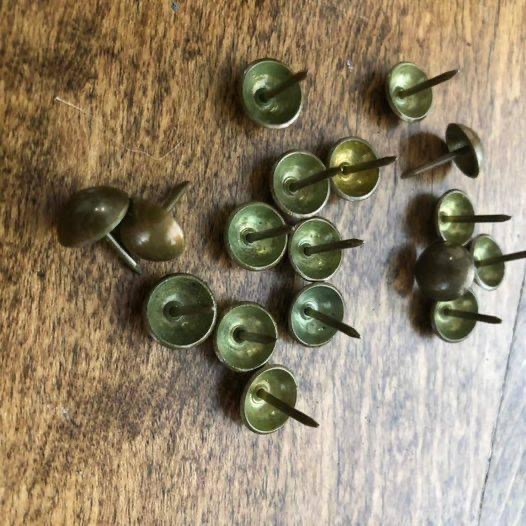
Origins and Early History
Thumb tacks, those ubiquitous staples of office and household utility, have a history that stretches back centuries. The earliest versions were simple nails with flattened heads, designed to be easily pressed into surfaces by the thumb. These rudimentary tools evolved over time, with the introduction of steel manufacturing techniques in the 19th century facilitating mass production and widespread use.
Evolution of Design and Materials
Antique steel thumb tacks were typically crafted from high-quality steel, known for its durability and sharpness. The manufacturing process involved shaping the steel into slender shafts with a sharp point at one end and a flat or rounded head at the other. The heads were often adorned with decorative elements, reflecting the craftsmanship of their era.
Practical Uses in Everyday Life
Throughout history, steel thumb tacks served a multitude of practical purposes. In offices, they were indispensable for pinning notices, memos, and photos to bulletin boards and walls. At home, they found use in hanging decorations, securing fabric on upholstered furniture, and various craft projects. Their versatility and ease of use made them essential tools in both professional and domestic environments.
Cultural Significance and Legacy
Beyond their utilitarian functions, antique steel thumb tacks hold a cultural significance. They are emblematic of an era when handwritten notices and personal correspondence were pinned up for public display. In historical contexts, they are often found in archives, preserving documents and photographs for future generations.
Collectibility and Modern Appeal
Today, antique steel thumb tacks are sought after by collectors and enthusiasts of vintage office supplies and ephemera. Their aesthetic appeal, coupled with their historical relevance, makes them prized additions to collections focused on antique stationery and desk accessories. Collectors appreciate the craftsmanship and design variations that distinguish thumb tacks from different periods and manufacturers.
Conclusion
The history of antique steel thumb tacks reflects the evolution of office supplies and household essentials over centuries. From their humble origins as simple nails to their refined forms crafted from steel, these tacks have left an indelible mark on both practical utility and cultural heritage. As relics of the past, they continue to fascinate collectors and serve as reminders of bygone eras when handwritten communication and tangible artifacts adorned walls and notice boards.